In the electric guitar landscape, few brands arouse as much passion and veneration as Gibson. Gibson guitars have always occupied a prominent place in the history of music, defining genres, creating icons and providing the link between artists and their audiences.
Gibson guitars are not just musical instruments; They are true symbols of creativity, innovation and passion. These guitars have spanned eras and generations, inspiring musicians of all kinds, from blues virtuosos to rock ‘n’ roll pioneers, jazz masters to heavy metal heroes. Their importance in music is intrinsic to their ability to shape sound and musical narrative, helping to define the sound of an entire era.
Each Gibson guitar embodies a unique story, a combination of wood, electronics and craftsmanship that makes it unique in the world. Since Orville Gibson founded the company way back in 1902, Gibson’s mission has been to create instruments that not only reflect craftsmanship, but also inspire and express musicians as well.
Gibson’s Origins:
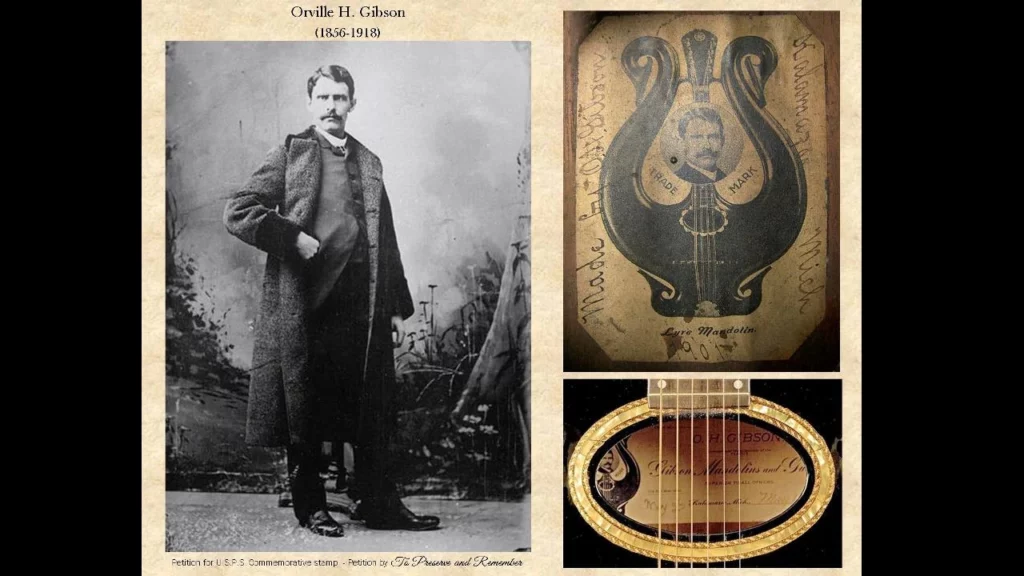
The history of Gibson guitars begins with a visionary man named Orville Gibson. Born in 1856 in Chateaugay, New York, Orville Gibson had a passion for violin making since childhood. His extraordinary skill in woodworking and his relentless pursuit of perfection pushed him to explore new approaches in the construction of musical instruments, mandolins in particular were the first instruments to see the light of day.
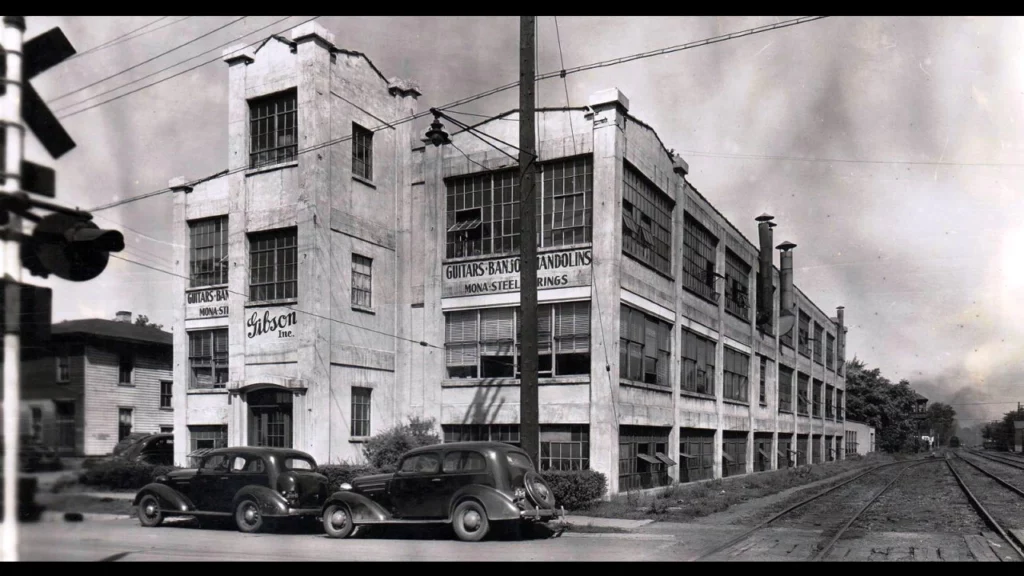
In 1902, Orville Gibson founded the Gibson Mandolin-Guitar Manufacturing Company in Kalamazoo, Michigan, to begin production of his innovative guitars and mandolins. However, Orville Gibson was not an entrepreneur, and the company struggled financially in its early years.
In 1920, Orville Gibson introduced his first archtop acoustic guitar with an innovative design that included a curved soundboard. This revolutionary innovation allowed for a more powerful and clear sound than the traditional acoustic guitars of the time, which had flat boards. Gibson’s archtop guitars quickly became popular among jazz musicians and were one of the first major steps towards creating electric guitars.
The turning point came when the company was purchased in 1902 by a group of investors led by Lyman H. Alling and John H. Sherwood. These businessmen saw the potential of Gibson guitars and moved production forward.
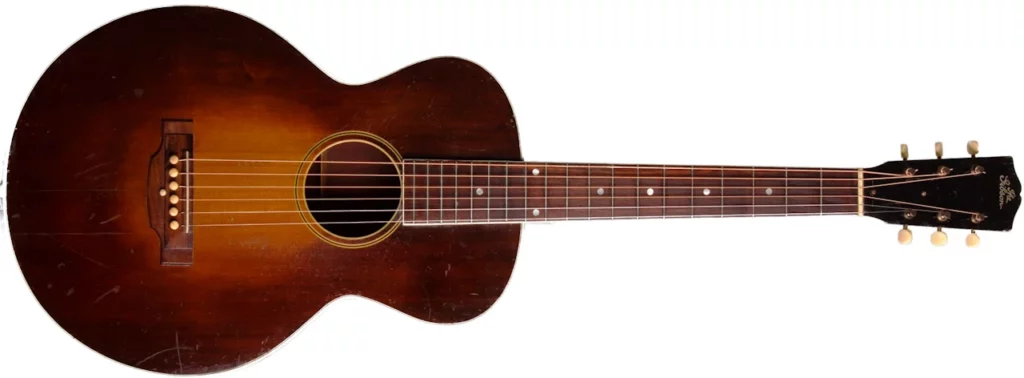
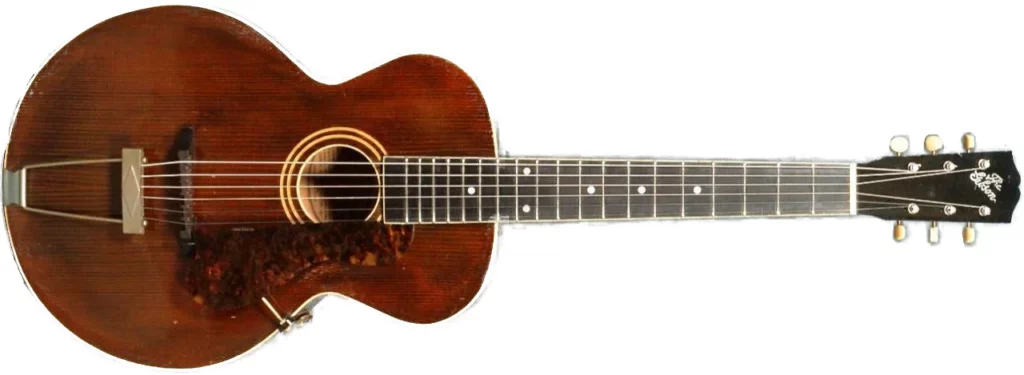
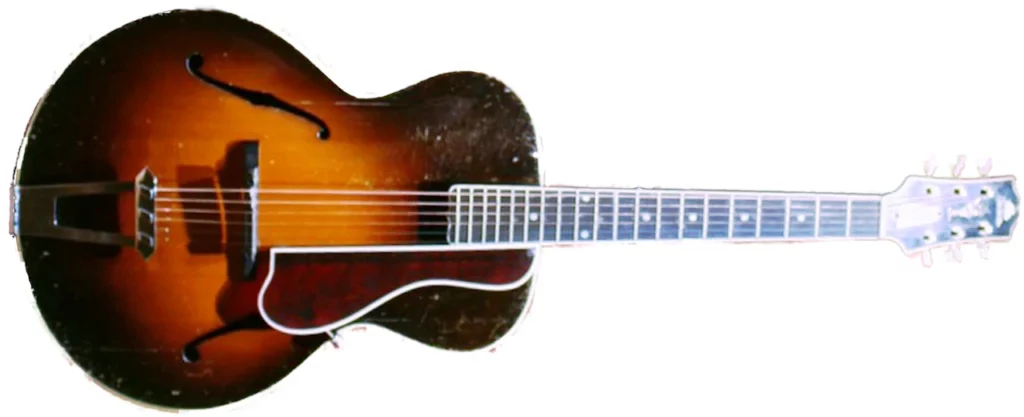
Over the next few years, Gibson further developed the design of archtop guitars, introducing models such as the Gibson L-1 and Gibson L-5. These acoustic guitars featured exceptional quality craftsmanship, sleek design, and rich sound, helping to establish the Gibson name as synonymous with quality and innovation in guitar construction.
The Advent of Electric Guitars:
The advent of electric guitars marked a crucial turning point in the history of Gibson guitars. In the 30s and 40s, the company was already recognized for the quality of its acoustic guitars, but the music landscape was undergoing a momentous transformation with the emergence of jazz, blues, and, later, rock ‘n’ roll. It was clear that something new and more powerful was needed to meet the needs of the musicians of the time.
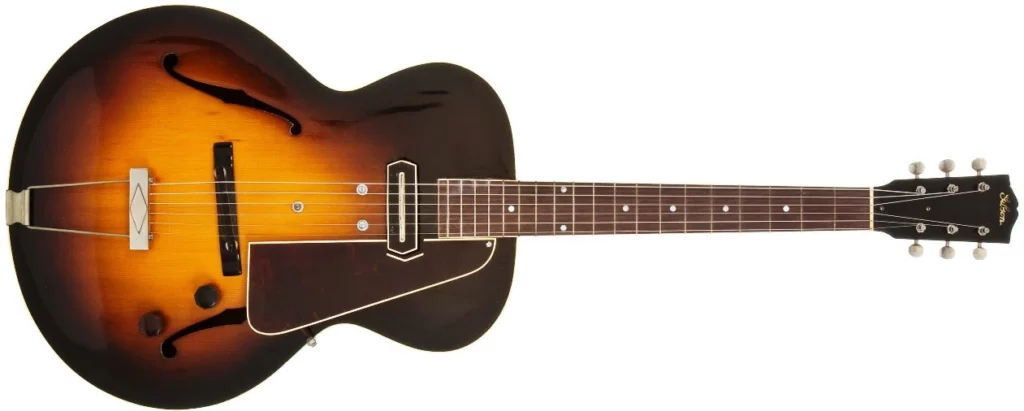
In 1936, Gibson introduced the Gibson ES-150, an archtop electric guitar that would revolutionize the way guitars were played and heard. The “ES” stood for “Electric Spanish”, emphasizing the Spanish origin of electric guitars, but it was the internal technology that really made the difference. The ES-150 was equipped with a single-coil pickup that Gibson named the “Charlie Christian pickup,” in honor of legendary jazz guitarist Charlie Christian.
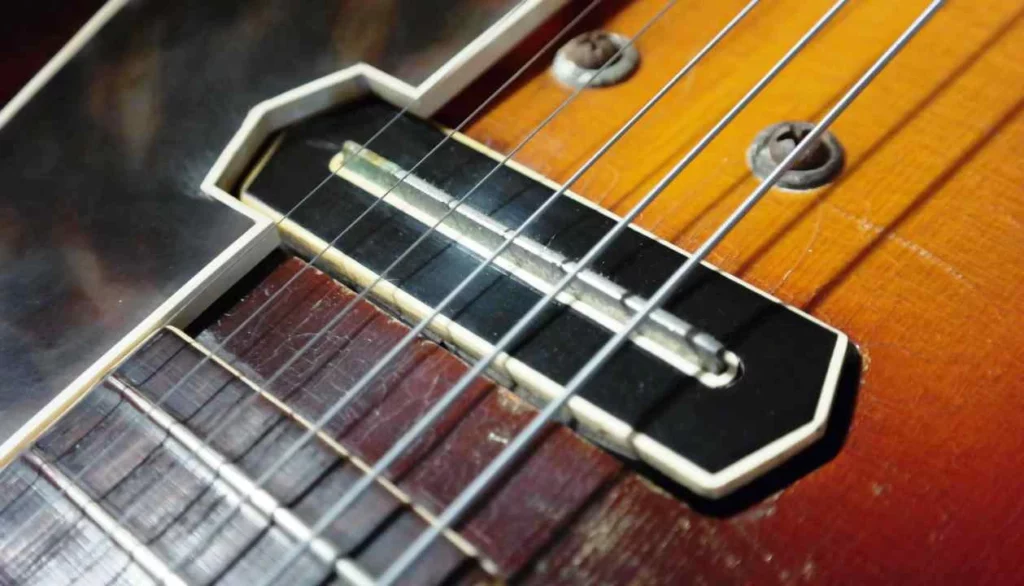
This innovative pickup offered superior sonic fidelity compared to amplified acoustic guitar pickups of the time, allowing players to reach higher volumes without compromising sound quality. The guitar quickly became popular among jazz musicians, and the distinctive sound of the Charlie Christian pickup became an iconic feature of recordings of the time.
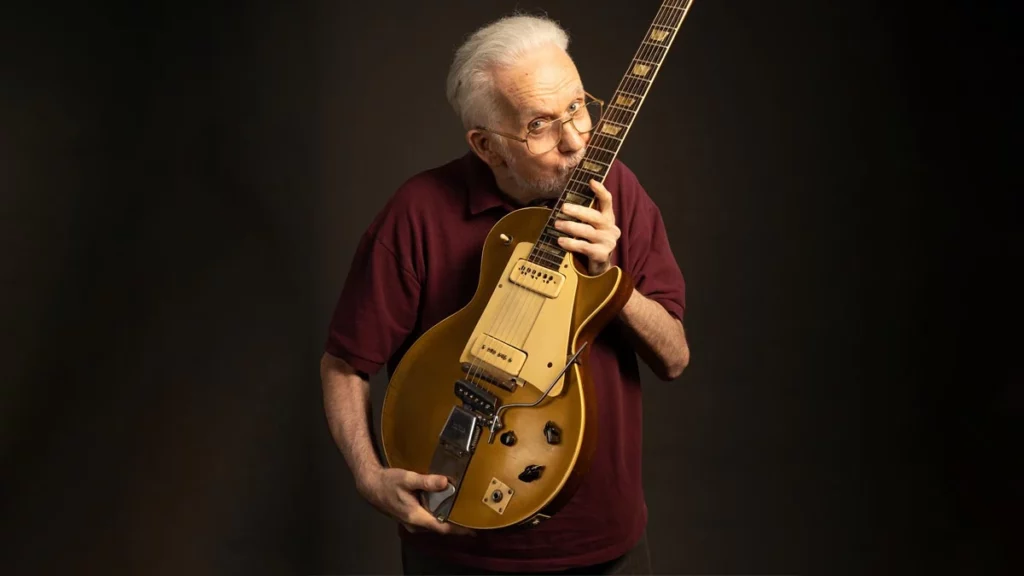
However, the real revolution came when Gibson teamed up with Les Paul, a guitarist and inventor known for his pioneering work in the electrification of guitars. In the 50s, this collaboration led to the creation of the Gibson Les Paul, one of the most celebrated and influential electric guitars of all time.
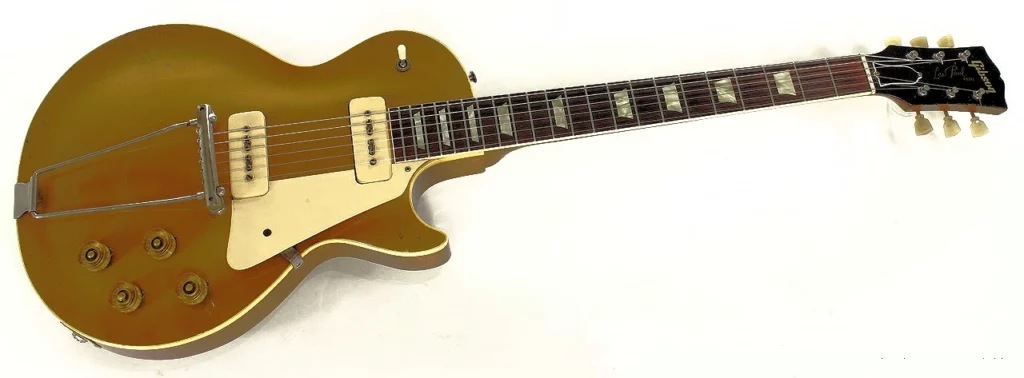
The Les Paul, introduced in 1952, featured a sleek design, a solid mahogany body, and, initially, two P-90 pickups. However, the most distinguishing feature was its solidity and sustain, thanks to the solid mahogany body and set-neck type construction, which connected the neck to the body. This combination of factors gave the Les Paul a warm, rich, and sustained sound that was well suited to a variety of musical genres, from blues to rock.
Gibson Celebrities:
Gibson guitars have given birth to some of the most important icons in the world of music in consideration of the fact that they are not only means of making music, but have become true cultural symbols and testimonies of the musical eras in which they emerged. Here are some of Gibson’s most famous creations:
a. Gibson Les Paul:
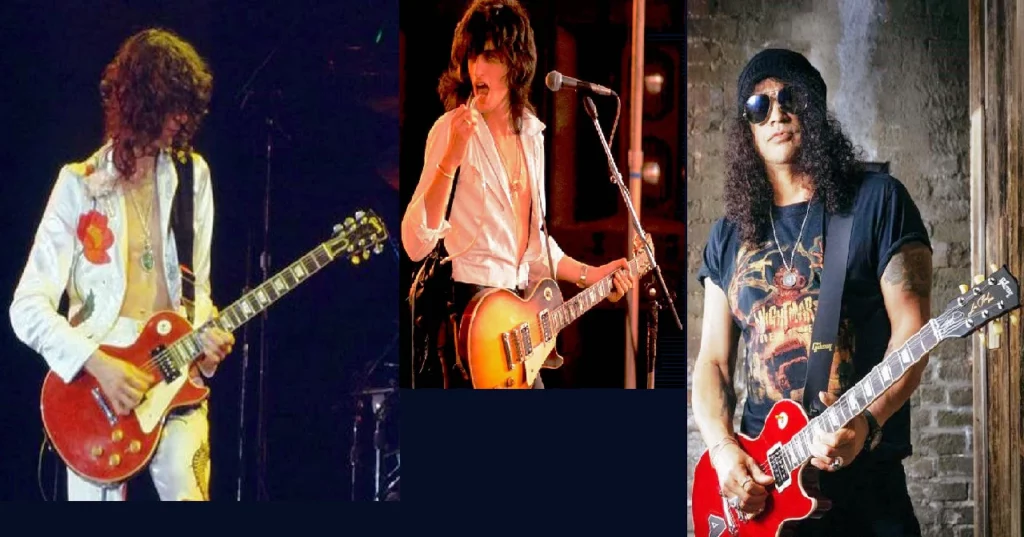
The Gibson Les Paul is undoubtedly one of the most famous and iconic guitar models ever. Introduced in 1952, this model has won the hearts of countless guitarists thanks to its sleek design, sonic versatility, and unparalleled sustain. The Les Paul has been played by legends such as Jimmy Page of Led Zeppelin, Slash of Guns N’ Roses and Joe Perry of Aerosmith. Its recognizable silhouette has become an emblem of rock ‘n’ roll.
b. Gibson SG:
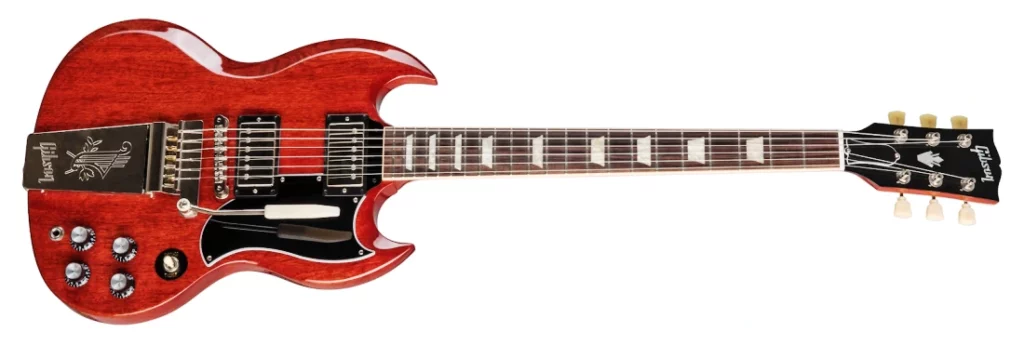
The Gibson SG, short for “Solid Guitar,” is another legendary guitar model. Introduced in 1961 as a revamped version of the Les Paul, the SG has a thin and light body that makes it ideal for loud rock. AC/DC’s Angus Young is perhaps the guitarist most associated with this model, and his energy on stage has become synonymous with a fiery SG.
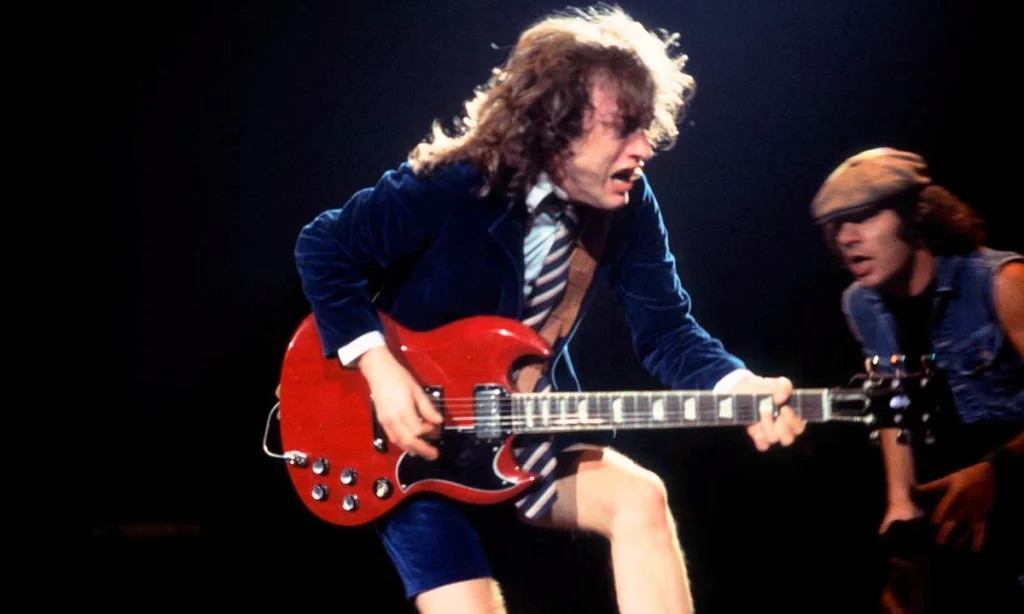
c. Gibson Flying V:
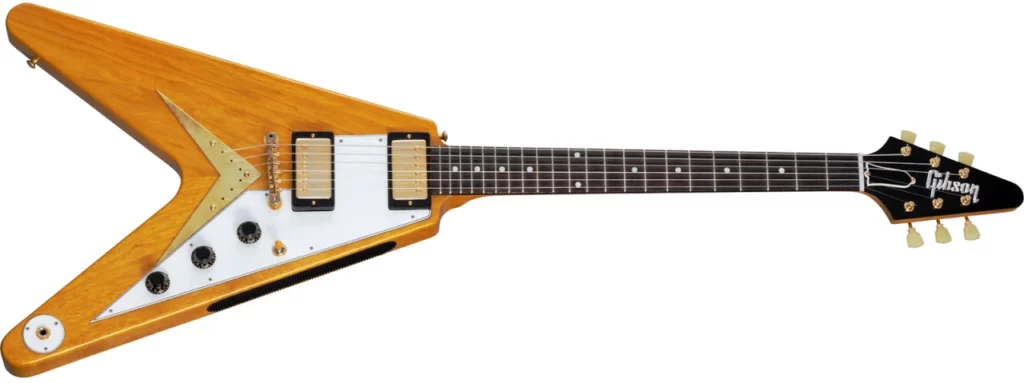
Introduced in 1958, the Gibson Flying V has a design that looks like it came straight from the future. Its V-shaped body is bold and distinctive, and this guitar has been loved by guitarists of genres ranging from rock to metal. Musicians such as Jimi Hendrix and Dave Mustaine of Megadeth have helped make the Flying V an icon of the guitar world.
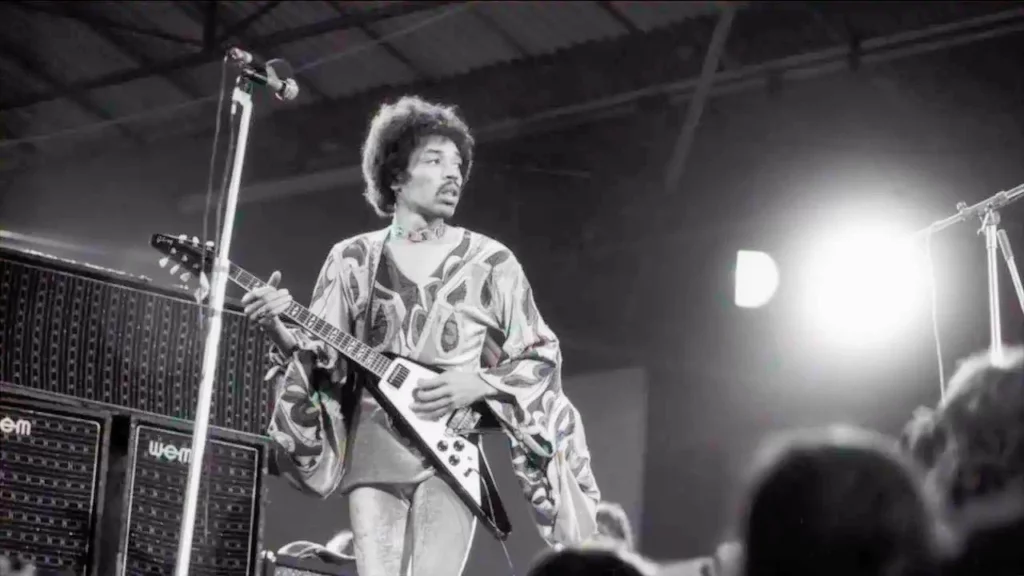

d. Gibson Explorer:
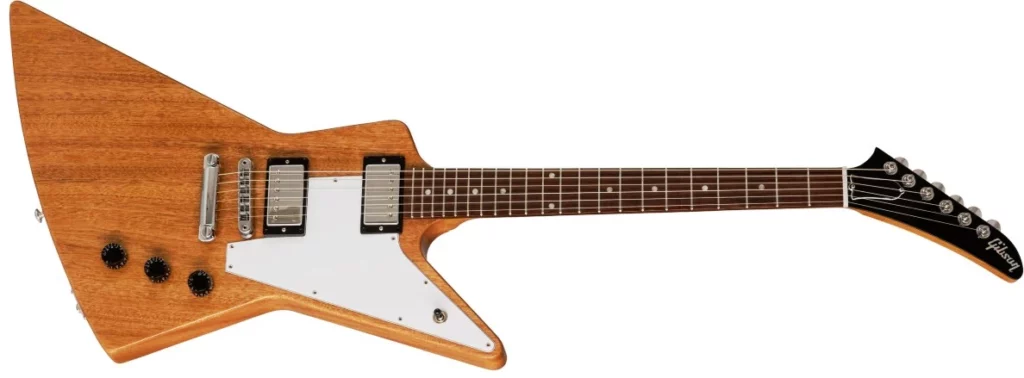
The Gibson Explorer, also introduced in 1958, is characterized by futuristic and bold lines. However, at the time of its debut, it was not well received and was even withdrawn from the market. Over the years, he gained a fervent following and today he is one of the most desired models by rock and metal guitarists such as James Hetfield of Metallica.
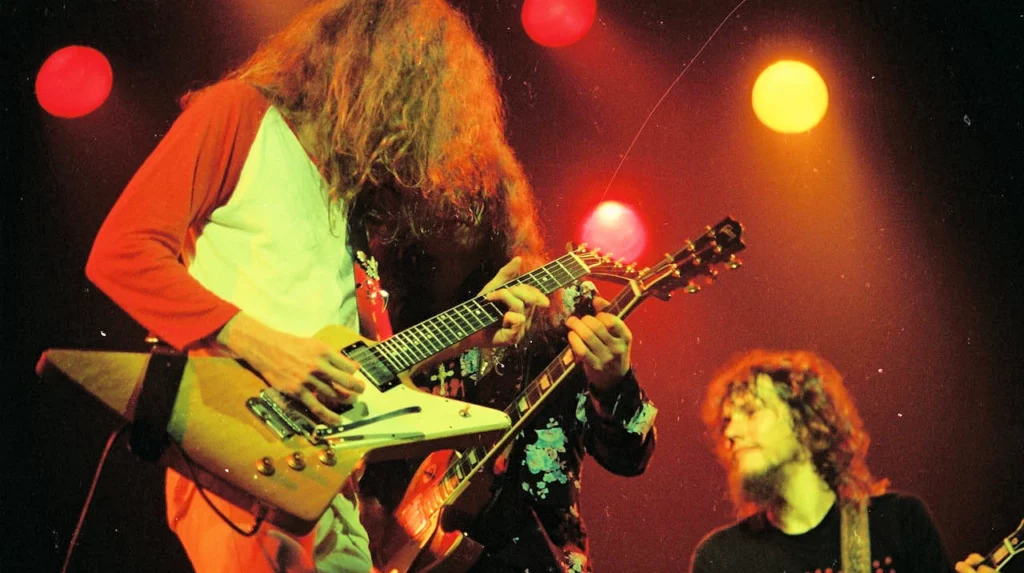
e. Gibson ES-335:
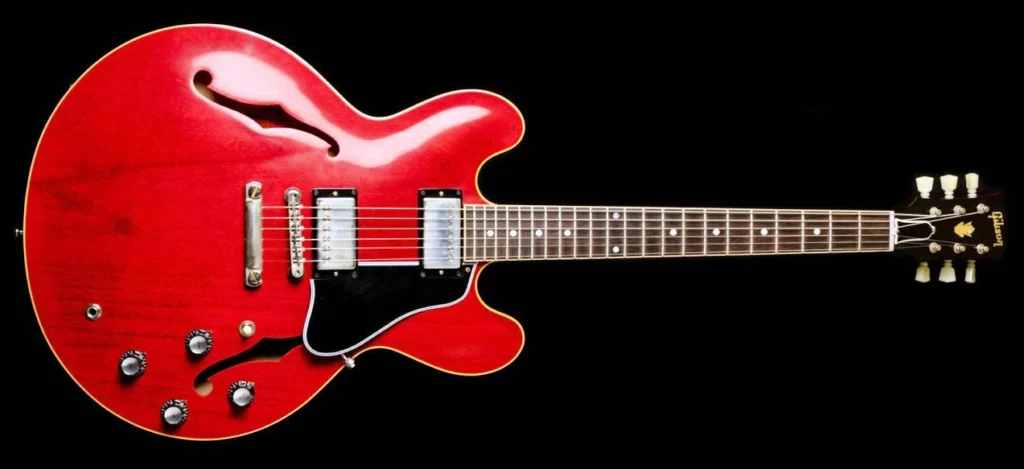
The Gibson ES-335 is a semi-hollowbody model that combines the elegance of an archtop guitar with the versatility of an electric guitar. This guitar has been played by blues and rock legends such as B.B. King and Chuck Berry. His distinctive sound was instrumental in the creation of rock ‘n’ roll.
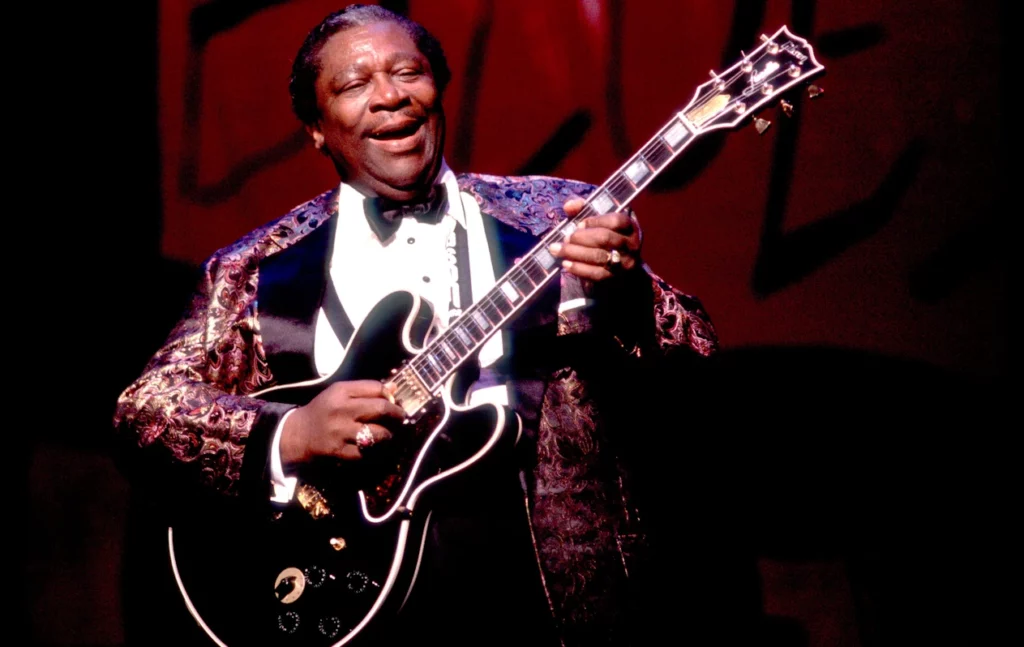
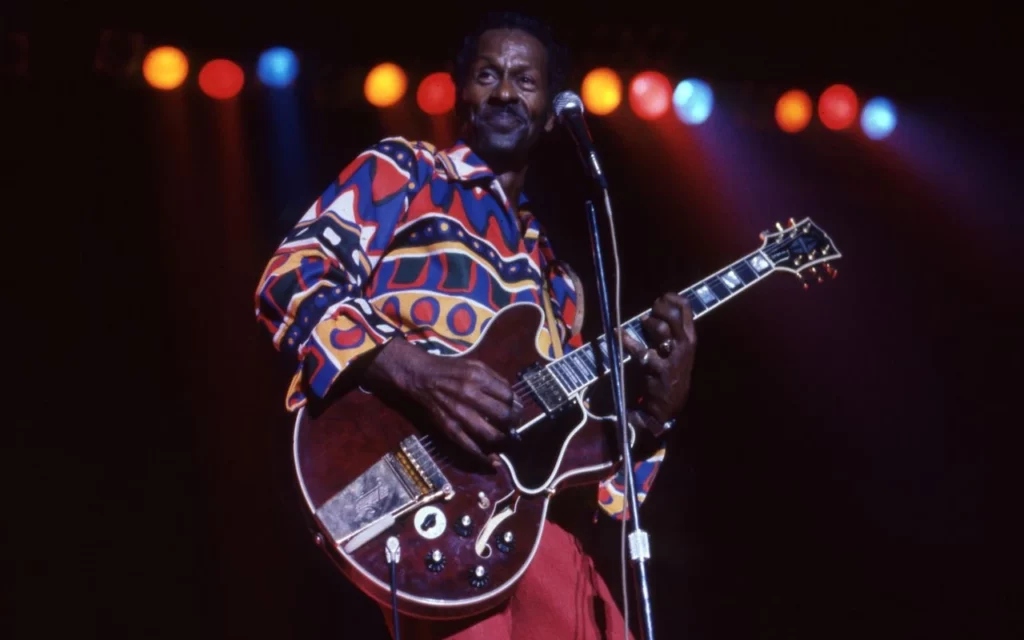
Gibson guitars today:
Gibson guitars have continued to evolve and adapt to the modern era, remaining highly desired by guitarists of all generations. Over the years, the company has maintained its tradition of high-quality craftsmanship and innovation, offering a wide range of models to meet the needs of modern musicians. Here’s how Gibson guitars have adapted to the contemporary era:
a. Gibson Les Paul Standard:
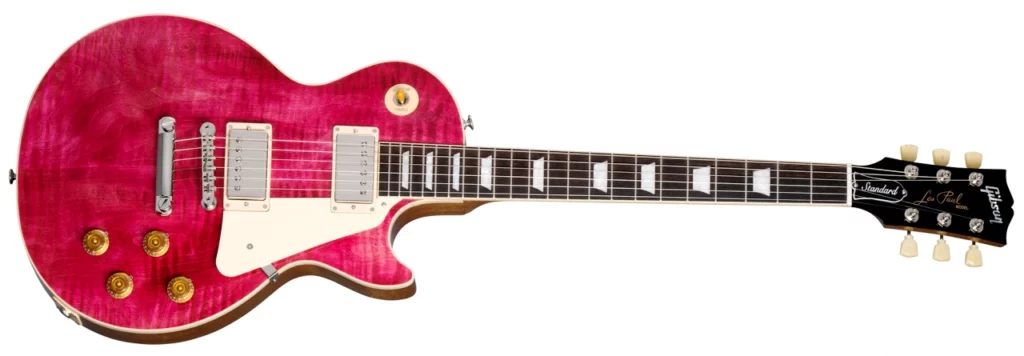
The Gibson Les Paul Standard is a timeless classic, but it continues to be updated with technical improvements. Featuring a warm, full-bodied sound, it has been played by a myriad of world-renowned guitarists. Modern editions include features such as Burstbucker Pro pickups, high-quality hardware, and an ergonomic design.
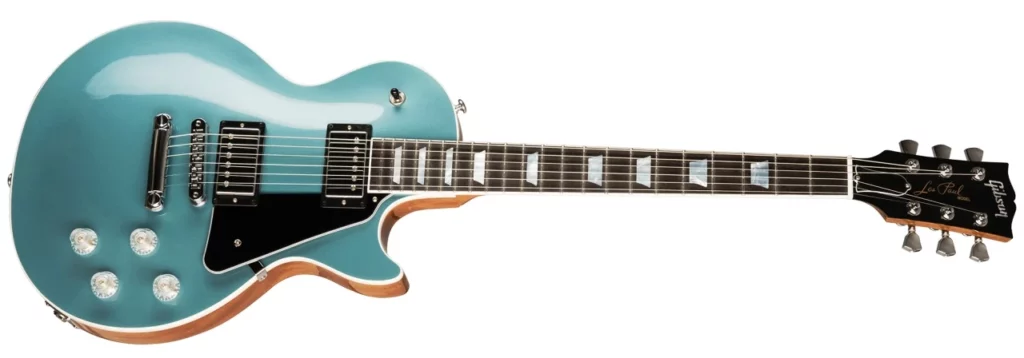
b. Gibson SG Modern:

The Gibson SG has received the “Modern” treatment, with upgrades such as Burstbucker Pro pickups, an ebony fingerboard, and improved neck access to facilitate high-speed performances. This contemporary version retains the essence of the classic SG, but with improvements for modern guitarists.
c. Technological innovations:
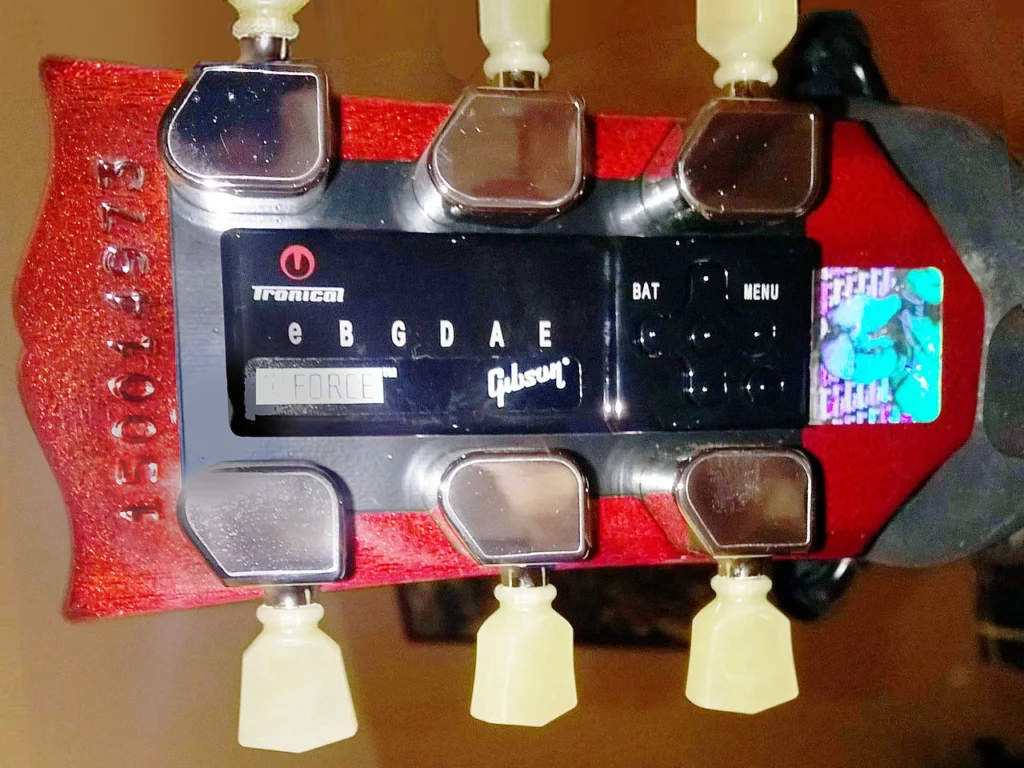
Gibson has embraced new technologies in the world of guitars. The Min-ETune automatic tuning system, for example, offers fast and accurate automatic intonation. Additionally, some Gibson guitars come with Piezo pickups for acoustics, allowing players to experiment with a wide range of sounds.
d. ES Line:
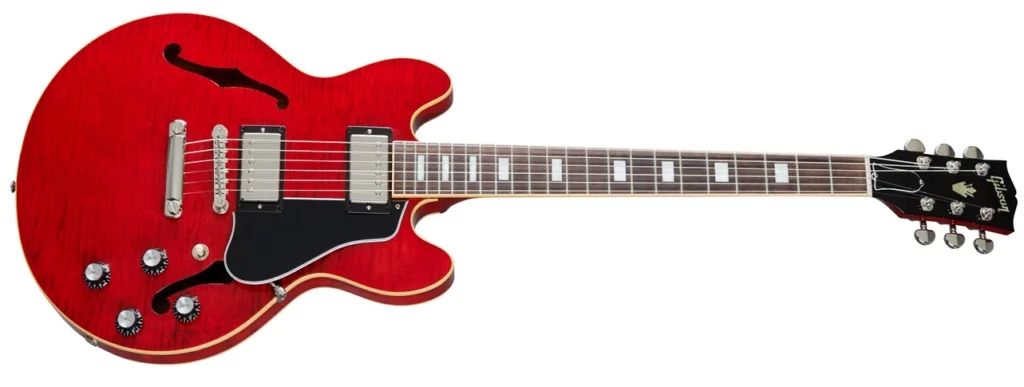
The semi-hollowbody guitars of the ES line continue to be popular with jazz, blues and rock musicians. These instruments have been updated with high-quality electrified pickups while retaining the vintage aesthetic and sound that make them unique.
e. Artist Series:
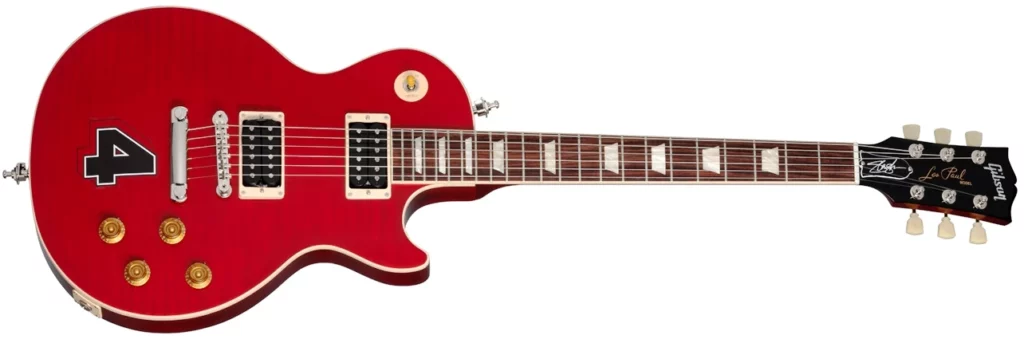
Gibson has collaborated with world-renowned artists to create signature guitars that reflect the sonic and stylistic preferences of these musicians. For example, Slash’s signature guitar, the “Slash Les Paul,” offers the legendary guitarist’s favorite specs.
f. Custom Shop:
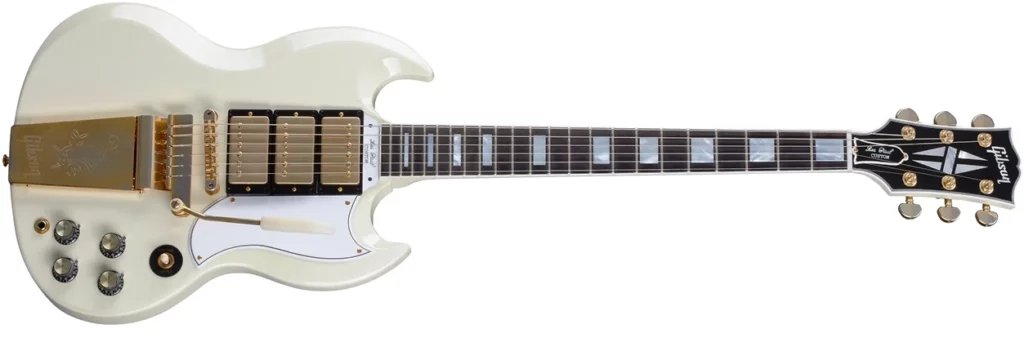
Gibson’s Custom Shop department continues to produce high-quality, handcrafted guitars, allowing guitarists to customize their instruments to their desired specifications. These guitars are considered to be some of the best Gibson has to offer.
g. Gibson in the Acoustic Guitar Industry:
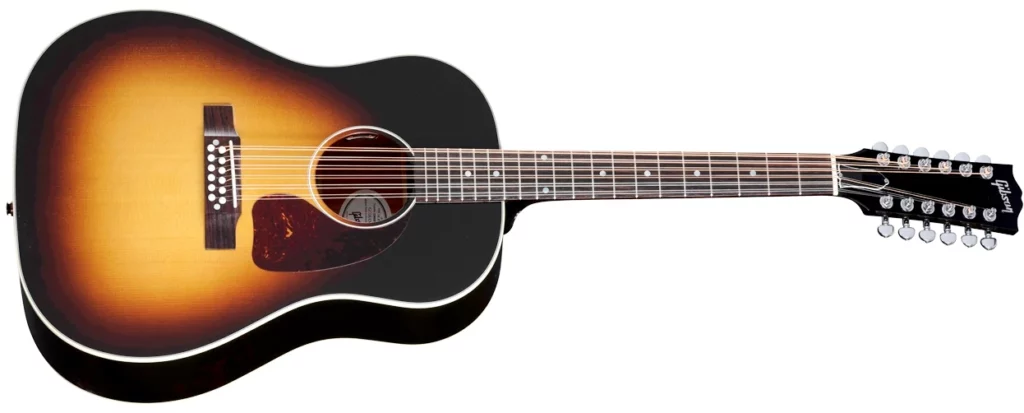
In addition to electric guitars, Gibson has a long tradition of producing high-quality acoustic guitars. The Gibson Acoustic series continues to produce premium instruments used by world-renowned acoustic artists.
Curiosities and anecdotes about the Gibson brand:
a. Les Paul rejected:
Perhaps one of the most surprising facts in Gibson’s history is that the Gibson Les Paul was initially rejected by the company itself. In 1941, when Les Paul presented his prototype guitar to Gibson, the company did not welcome it with enthusiasm. It wasn’t until 1952, after the success of the Fender Telecaster and Stratocaster guitars, that the Les Paul was reintroduced and became an icon.
b. “Black Beauty” di Les Paul:
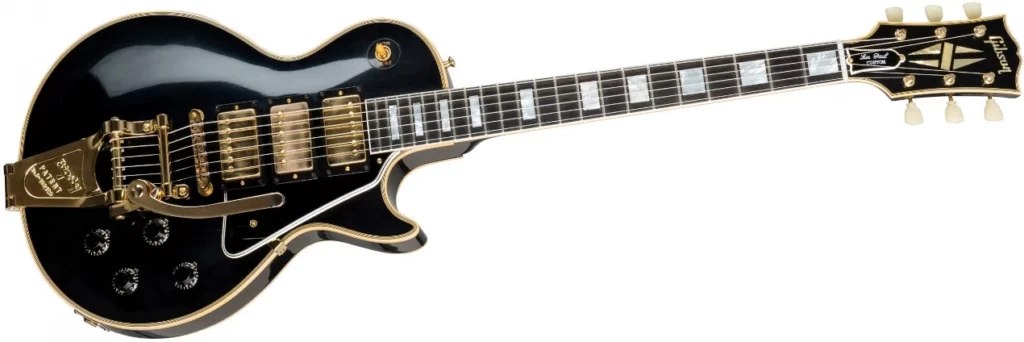
Les Paul, known for his love of electronics, customized his Gibson Les Paul with three electric pickups, creating what became known as the “Black Beauty.” This guitar has become one of the rarest and most sought-after in the world of vintage guitars, and one example was sold at auction for a record amount.
c. The “Holy Grail” of guitars:
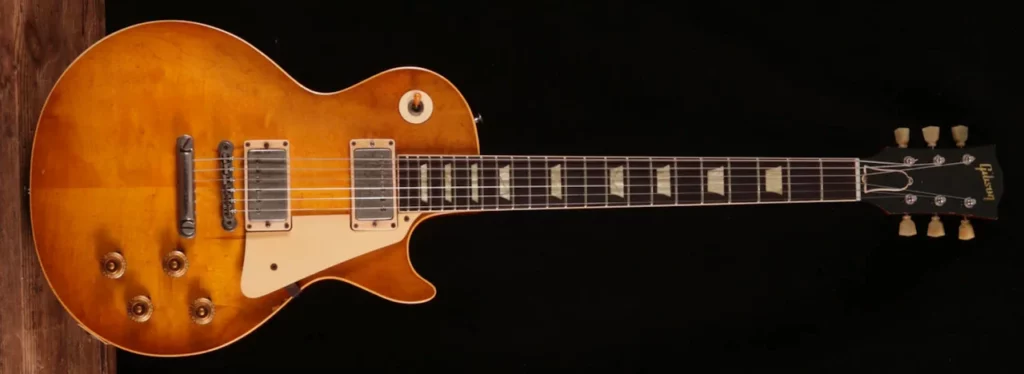
Some Gibson models, such as the “Burst” (Gibson Les Paul Standard ’59), are considered the “Holy Grail” among vintage guitars. These guitars are famous for their exceptional sound and rarity. The Gibson Les Paul Standard ’59 Burst was sold at auction for a stratospheric sum, making it one of the most valuable assets in the guitar world.
d. The original Gibson Flying V:
When it was introduced in 1958, the Gibson Flying V received a lukewarm response and was even withdrawn from the market in 1959 due to poor sales. However, in the following years, he became an icon in the world of rock and metal and one of the most desired models among guitarists.
e. The Guitars of Legends:
Many famous Gibson guitars have been customized and played by legendary artists. For example, B.B. King’s ES-335 guitar, nicknamed “Lucille,” has become a blues icon. Similarly, Angus Young’s Gibson SG has become a symbol of AC/DC.
f. Guitars in the hands of iconic women:
Many iconic women in music have chosen Gibson as their guitar of choice. Joan Jett is known for playing a Gibson Melody Maker, while Lizzy Hale of Halestorm has a collection of Gibson guitars, proving that these guitars know no genre limitations.
Gibson’s Legacy:
Gibson’s legacy in the guitar world is, and will continue to be, deep and enduring. Here’s how Gibson continues to influence music culture:
a. Contribution to musical genres:
Gibson guitars have played a crucial role in the creation and development of musical genres such as blues, rock ‘n’ roll, jazz, and metal. The Gibson Les Paul, for example, was fundamental to classic rock, while the Gibson ES-335 contributed to the sound of blues and jazz.
b. Vintage guitars and collectibles:
Vintage Gibson guitars are cult objects for collectors and guitar enthusiasts. Models like the Les Paul Standard ’59 Burst are among the most valuable guitars in the world, and the market for vintage Gibson guitars continues to thrive.
c. Global Brand:
The name “Gibson” is synonymous with quality, craftsmanship and prestige in the world of guitars. The company has a global presence and continues to serve musicians and guitar enthusiasts around the world.
d. Inspiration for new generations:
Music is a universal form of expression, and Gibson guitars continue to inspire new generations of musicians. Young guitarists look up to their heroes and often try to emulate the sound and guitar style of icons who have played Gibson guitars.
Referral Links
- Gibson Official Website
- Gibson su Wikipedia
- The Gibson Guitar History
- The History of Gibson Guitars
- The Ultimate Gibson Les Paul Book (Book)
- Gibson Electric Guitar Book
If you are also passionate about the world of guitars, why not take a look at the dedicated section of the site?

 it_IT
it_IT